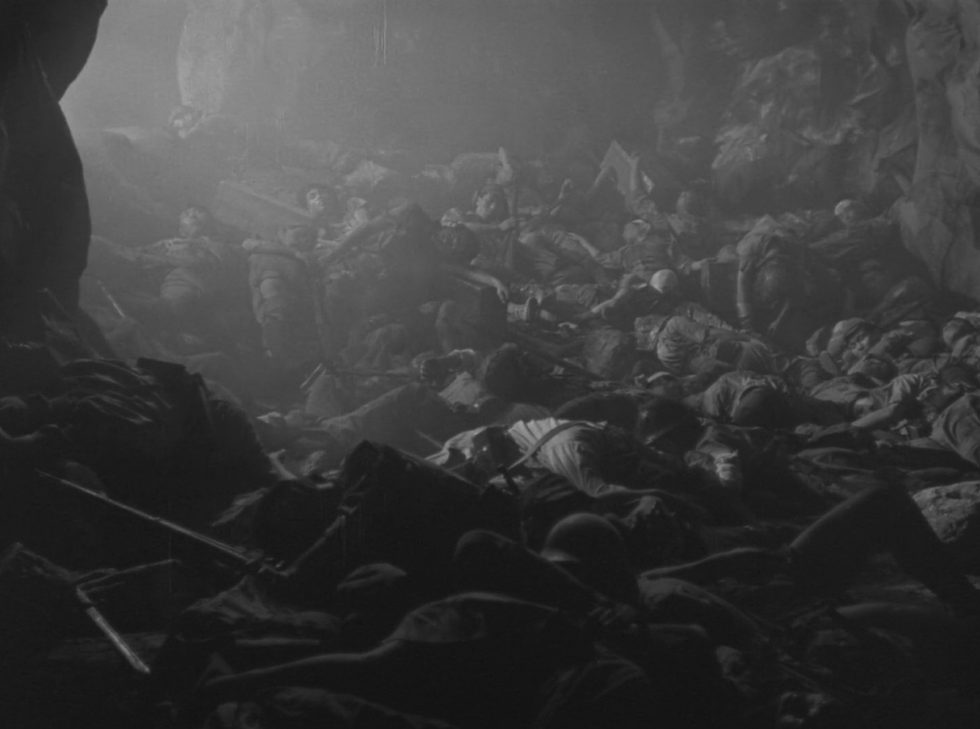- 2 min read
Updated: May 17, 2022

The Burmese Harp (1956) (ビルマの竪琴) is a Japanese anti-war film directed by Kon Ichikawa and based on a novel for children (same name) by Michio Takeyama. It starts off at the end of WWII with a group of weary Japanese soldiers traversing the Burmese landscape. One plays a harp (saung), to which the others sing. They come to a village where the locals welcome them with food and a roof to rest under. After the meal, the locals quietly slip away, and the Japanese realize that British and Indian soldiers in the forest have surrounded them. The Japanese sing a song, to make the Brits believe they're not on to them, but then the Brits join in and for a while sing along with them, and the Japanese soon learn the war has ended.
Private Mizushima (the harpist) is sent on a mission to convince another Japanese battalion to put down their weapons and peacefully leave the hillside cave where they've been holed up. He fails when the commander decides Mizushima must be lying or it's some trick of the enemy; after all, the Japanese would never surrender. The Brits resume their bombardment, and Mizushima is left for dead on the gravelly hill.
Captain Inouye and the rest of Mizushima's battalion have been taken to a camp in Mudon for prisoners, and before long come to believe that their dear Mizushima perished on his mission. But then while crossing a bridge over a river they pass a man who, although dressed like a Burmese monk, looks very much like their lost comrade. Could this be Mizushima?
The film is very good storytelling and beautifully shot. Ichikawa remade the film in color in the 80s, and apparently he wanted to shoot the original in color too but ultimately decided against it due to concerns about lugging the camera equipment in and out of certain shooting locations in Burma. Much of the film was shot in Japan, but the scenes in Burma stand out for their magnitude and cultural significance and must be among the earliest filmed there. It was nominated for an Academy Award in the "Best Foreign Language Film" category for 1957. It was also one of the first Japanese post-war films with a pacifist theme. Although the film doesn't touch on Japanese war atrocities in the region (it's been argued that Ichikawa wouldn't have been aware of those events at the time of filming), it does depict Japan's new post-war spirit, with the Buddhist ideal of altruism the main substance underlying the narrative.
































